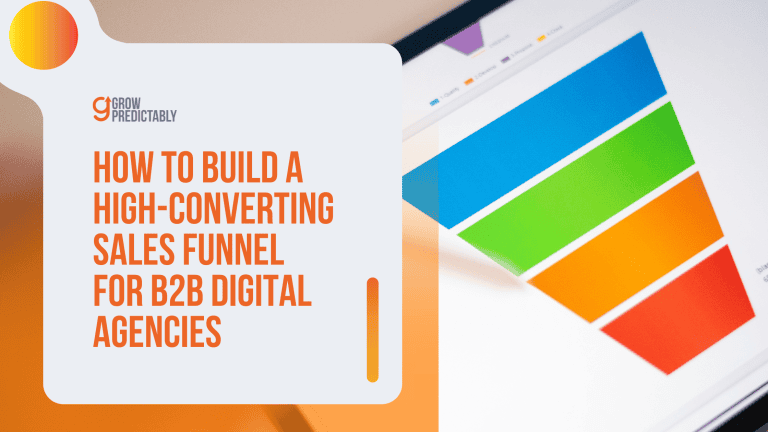The One-Call Close: Top 7 Tips to Boost Your Sales Success
Sealing the deal can be a challenging journey, often requiring several discussions before reaching a successful conclusion.
Each time you reach out to a prospective client to sell something, you must start anew in cultivating a connection and nudging them toward making a purchase. It’s no surprise that numerous salespeople and professionals find it tough to finalize deals.
The solution lies in the one-call close technique. By carefully strategizing your approach and capturing all necessary sale information in just one call, you simplify the process for yourself and your customer. With this method, you’ll efficiently complete more sales in a single conversation.
Let us walk you through this process in the following article…
The Core of One-Call Closing
The one call closing plays a crucial role in the sales process, necessitating that sales professionals arrive equipped with a plan to persuade clients to buy. Its purpose is to save time and resources by minimizing prolonged back-and-forth negotiations.
At its core, sales closing relies on three key principles: evidence-based pitching, clear communication of the value proposition, and emotional appeal.
To achieve success in a sales presentation using this closing approach, the sales representative must effectively showcase how the product or service aligns with the customer’s requirements and confirm its value as a solution.
This entails collecting evidence in advance and being prepared to address any potential objections with well-structured counterarguments.

Before the One Call Closing
This closing approach can be challenging, even for the most skilled salesperson. In the sales process, many representatives dread hearing a disheartening “no” after delivering their pitch.
It’s vital to reduce the element of chance as much as possible. The solution lies in thorough preparation beforehand to effectively market and close sales.
Engage in Proper Research
Conducting thorough research prior to a one-call close helps foster trust between the sales professional or expert and the potential client, as it demonstrates an understanding of the customer’s preferences and the necessary steps taken to develop an effective solution.
Effective research allows many reps to establish meaningful connections with customers while showing them how valuable they are, ultimately increasing the likelihood of closing a deal on the first call.
Moreover, research aids in foreseeing customer objections, allowing for preemptive solutions that can be addressed during the sale.
By approaching each conversation equipped with pertinent responses, sales professionals are well-positioned for successful closures, ensuring every call is worthwhile. This is a vital aspect of sales training.
Know Who Will Be Joining the Call
Being aware of who will participate in the call offers valuable information about their preferences, obstacles, objectives, financial status, and decision-making processes.
This can help sales professionals craft well-targeted messages that are more likely to engage customers positively.
Additionally, possessing an understanding of existing knowledge helps numerous representatives avoid posing repetitive questions that customers have already answered or deem irrelevant.
Craft An Effective Sales Pitch
Developing a compelling sales pitch prior to attempting a one-call close is crucial for achieving sales success.
Be sure to show them how they can benefit from what you have to offer: Why is it a better option than what they’re currently doing? What sets you apart from other competitors out there?
As experienced sales professionals understand, the secret to success lies in thorough preparation and devising a personalized pitch that caters to your customer’s needs and objectives. This should be highlighted during the sales training.

During the Sales Call
Use Clear Language
Utilizing clear language is essential when presenting offers to prospective customers, detailing product features, or even discussing the terms and conditions of an agreement. This approach puts potential clients at ease and simplifies the comparison of products or services.
Using clear language also helps to maintain a positive atmosphere throughout the sales process and keeps things moving in a productive manner.
Moreover, it eliminates any ambiguity about the beneficiaries of the sale, providing both parties with confidence that they fully comprehend the agreed-upon terms.
Take Note of the Customer’s Objections
During a call, savvy sales professionals understand the importance of closely listening to customers’ objections, as they can frequently uncover areas needing enhancement and offer crucial insights into the purchasing process.
Taking note of customer objections is an important way to gain insight into their decision-making, down to what elements are most important for them in reaching their goals.
By documenting these objections and proactively addressing them, it is possible to foresee and avert customer dissatisfaction from arising later on.
Being aware of your customers’ concerns also fosters trust, demonstrating that your business is attentive to their problems and taking appropriate measures.
Aim for Maximum Engagement
In sales, the success of any call relies significantly on customer engagement throughout the entire sales process, making it an essential sales tip to always bear in mind.
Full engagement entails a customer who is not only interested but also ready to take action, whether that involves making a purchase or giving feedback.
To reach this degree of attentiveness, being informative alone isn’t enough – forging an emotional connection with the customer is crucial. This can be accomplished by building rapport and fostering a meaningful, two-way conversation.
By leveraging engaging conversation techniques rather than merely presenting information, sales reps can aim to not only achieve their business goals but also go beyond what’s expected and create loyal customers along the way.
As a result, not only will customers and prospects gain a deeper understanding of your product, but they’ll also sense that their interests are valued.
7 Tips to Boost Sales With One-Call Close
1. Make a Good First Impression
Upon establishing contact with a prospective customer, creating a positive first impression is crucial. This entails maintaining a friendly and professional demeanor, articulating your thoughts clearly, and exuding confidence.
Keep in mind that individuals prefer doing business with those they like, so it’s essential to present yourself as someone they would be eager to work with.
2. Build Rapport
After conducting your research and initiating the call with your prospective customer, it’s essential to begin fostering rapport. This involves discovering shared interests, engaging in casual conversation, and becoming acquainted with one another.
The stronger the rapport you establish, the higher the likelihood that your potential customer or prospects will trust you and choose to do business with you.

3. Ask Questions
Inquiring more details about your potential customer and their requirements is an excellent method to understand them better. It also demonstrates your genuine interest in their concerns and your commitment to identifying a suitable solution for them.
Make sure to pose open-ended questions, prompting your prospect or potential customer to elaborate further on their needs and desires.
4. Listen More Than You Talk
Keep in mind that these calls are centered around the individual you’re speaking with, not yourself. This implies that your focus should be on listening rather than talking.
Make a genuine effort to comprehend what your potential customer is conveying and their expectations from you. The more attentively you listen, the better prepared you’ll be to seal the deal.

5. Offer a Solution
Once you understand what your potential customer is looking for, it’s time to offer them a solution. Be sure to tailor your solution specifically to their needs so that they can see how it will benefit them.
If possible, offer a demonstration of your product or service so that they can see how it works firsthand.
6. Overcome Objections
After proposing a solution, be prepared for potential objections from your prospective customer. It’s crucial to anticipate these concerns and have well-thought-out responses to address them.
Keep in mind that the objective is to progress with the sale, regardless of any challenges that may arise.

7. Be Persistent but Not Pushy
Persistence is key when attempting to close sales, but being overly aggressive should be avoided. If your potential customer appears uncertain or disinterested, don’t hesitate to directly request the sale.
Nonetheless, if they persistently decline or display discomfort, respect their boundaries and provide them with breathing room.
It’s crucial not to come across as desperate or forceful, as this will only further deter them from doing business with you.

Before Ending Your Call
Do A Quick Recap
Concluding a sales call on a positive note is crucial for inspiring customers to proceed with a purchase. It’s beneficial for sales representatives to allocate a few minutes for a brief summary before wrapping up the conversation.
This allows them to thoroughly review the topics discussed during the call and emphasize valuable information for both parties.
A recap ensures that all the key points have been covered, and prevents misunderstandings from arising. Additionally, it creates a closing point for the call and allows each party to address any additional questions or concerns.
Furthermore, outlining mutual objectives in the recap helps maintain customer motivation and keeps their focus on you as the optimal solution for their needs.
Thus, conducting a swift recap at the end point of your call is a vital strategy for solidifying every detail with potential clients and enhancing your conversion rate.
Request for Feedback
Finalizing a sales call can be quite challenging at times. It’s crucial to evaluate if the customer is content with every aspect of their experience, ensuring their long-term loyalty and fostering repeat business.
Getting customer input helps you better appreciate how they view the product or service, allowing you to address any issues they may have.
This not only enhances the current customer experience but also fortifies future relationships by demonstrating that their opinions are respected and considered.
Moreover, feedback offers concrete data points to decision-makers regarding the product’s reception among potential customers, potentially pinpointing areas for enhancement or emphasizing features that warrant more marketing attention.
FAQs
In sales, a one-call close is a practice of completing the entire sales process in a single phone call. This includes everything from qualifying the prospect to making the pitch to closing the deal. While this may sound like a tall order, it can be an effective way to streamline the sales process and close more deals. Here are the top questions when it comes to this closing technique.
Final Thoughts,
The one-call close has rapidly emerged as a highly efficient sales technique in recent times. This method of sealing deals prioritizes the customer experience and revolves around fostering relationships, showcasing value, and simplifying the buying process for customers.
When executed proficiently, the one-call close alleviates customer apprehension while enabling businesses to attain improved outcomes and sales results in a shorter duration.
In the long run, these sales tips can contribute to greater success for companies that adopt it – not only by boosting sales and income but also by generating more contented customers who are inclined to come back repeatedly.








